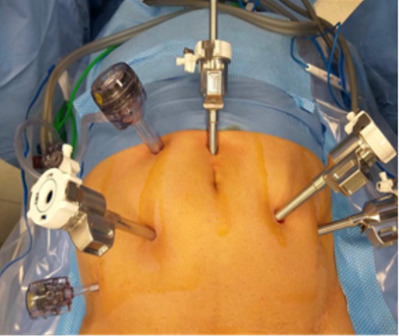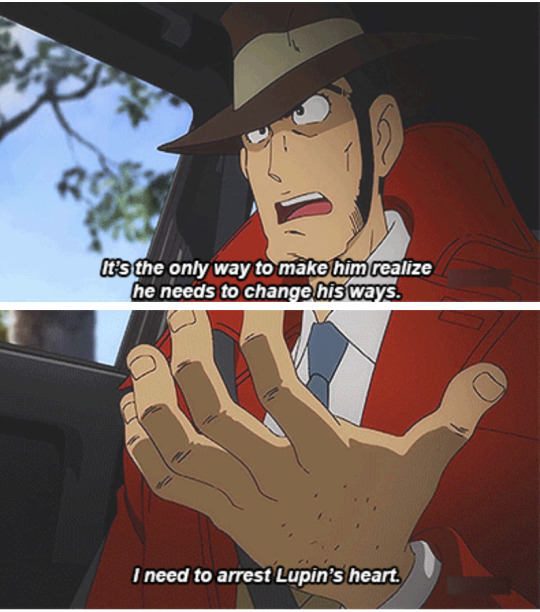#Lupine group
Text
Climate Change Threats to Ecosystems

Introduction
There is a huge accumulation of thermal energy in earth’s climate system in the upper oceans, deeper oceans, in the ice, land, and also atmosphere. And as a result of this, it is expected to have serious consequences on the physical systems that are there on the earth like the glaciers, snow, ice, permafrost, rivers, coastal areas, sea level rises, erosion of coastal areas, and also terrestrial ecosystems, biological systems, marine ecosystems, wildfire, and also managed systems like livelihoods, food production, economics and health.
Read more about this article: https://lupinepublishers.com/biosensors-renewable-sources/fulltext/climate-change-threats-to-ecosystems.ID.000106.php
Readmore
LupinePublishersGoogleScholar
Articles:
https://scholar.google.com/citations?view_op=view_citation&hl=en&user=5ql0QHJV55QC&citation_for_view=5ql0QHJV55QC:dhFuZR0502QC
0 notes
Text
Lupine Publishers | Robot-Assisted Radical Prostatectomy our Technique Description

Abstract
Objective: To describe step-by-step technique in Robot Assisted Radical Prostatectomy of our transperitoneal posterioranterior technique for prostatic dissection with preservation of the endopelvic fascia, preservation of the puboprostatic ligaments and dorsal venous complex.
Materials and Methods: Description of our surgical technique over 80 patients who underwent RARP and the characteristics group from 2016 to 2019 excluding the rest of cases who went to different surgical approach and technique for robot-assisted radical prostatectomy.
Results: The mean age was 63 years old, 7% of patients were overweight and 7.5% had obesity. The mean pre-operative prostate volume was 42.620 cc, mean prostatic specific antigen (PSA) of 10.414.8 ng/dl. The mean console time was 198±47. The surgical margins were positive in 13.75% of the patients. Complications were recorded in the peri-operative period, five (6.2%) Clavien-Dindo I and six (7.5%) Clavien-Dindo II.
Conclusions: After 8 years of experience in our center we have modified our technique of robot assisted radical prostatectomy, improving our results, following different worldwide concepts in the prostatic dissection. Even if necessary, to increase the number of cases we have find an easier way to reproduce with acceptable results.
Keywords: Robotic Radical Prostatectomy, Prostate Dissection, Transperitoneal Approach
Introduction
In the past year’s robot assisted laparoscopic surgery is becoming more easily available in Latin America, in México was introduce by our department in Mexico, City in 2013 we accomplished the first robot assisted radical prostatectomy. At the beginning we started performing an anterior technique, which is, in most centers the standard of treatment for localized prostate cancer.
The technique varies depending on the place of learning or according to initial proctoring and preferences. Twenty years ago, was introduced the laparoscopic approach, at that time was usual the retrograde dissection starting with the apex. Guillonneau et al., described the mixed technique modifying the Mountsouris technique where they used and antegrade and retrograde approaches in 7 standardized steps. [1]After in 2003 following several years of evolution in the robotic radical prostatectomy technique the Frankfurt group published a case series of their robot-assisted technique using ascending and descending techniques for prostate approach [2]. In 2012 Asimakopuolus et al., described their intra fascial dissection of the neurovascular bundle [3]. Several approaches since that time have been created. In this article we describe our technique, which has been modified since our initial experience from 2011, after learning the lateral anterior approach in France, and then modifying to a mixed technique in between anterior and the Bocciardi approach[4].
Materials and Methods
Description of our surgical technique over 80 patients who underwent RARP and the characteristics group from 2016 to 2019 excluding the rest of cases who went to different surgical approach and technique for robot-assisted radical prostatectomy at the same time.
Technique step-by-step
We include a single surgeon experience over 80 cases from January 2016 up to December 2019 of Robotic Assisted Radical Prostatectomy, following the next description of the technique.
Port placement and Docking
The trocars placement starts once needle Veress insufflation of the cavity is performed. We use a four-arm X da Vinci robotic system (Intuitive Surgical, Sunnyvale, CA, USA). First robotic trocar is placed one centimeter higher to the umbilicus, two da Vinci X ports on the left side, first one, four cm to the left of the camera trocar and the second one, four more centimeters according to the anterior axillar line. On the right side, one more robotic port (8 mm) four centimeters from the camera port in a horizontal line. Two more accessory ports for the assistant are placed, one 12 mm port in a triangle between the camera port and first robotic port on the right, and a 5 mm port down and 3 centimeters upper the iliac crest (Figure 1).
TransperitonealPosterior Dissection
Sigmoid dissection is performed to allow enough space in the rectovesical area. Upper traction is done by the prograsp instrument in the middle line in between bladder fatty tissue and the line of the rectum. We follow the vas deferens reflection to start the perineotomy through the pouch of Douglas. Reaching the vas deferens we transected, we follow them laterally for each side preparing the seminal vesicles, as the description of Montsouris technique. The next step is to dissect the full posterior base of the prostate, opening the Denonvilliers fascia reaching the apex of the prostate area where the urethra can be visualized, once we finish the medial space in between the prostate and the rectum, we start the nerves bundles preservation. By manipulating the right vesicle with the fourth arm, we expose the angle of the vesicle tip and the base of the prostate. The inferior and superior portions of the lateral face of the prostate are dissected. Then we reproduce the same on the left seminal vesicle, up traction to expose the base of the prostate and we perform the nerve sparing on an antegrade way, if necessary we place 5 mm clips coming from one of the assistant ports to avoid the bleeding from the capsular arteries going through the prostate and to control the prostatic pedicles. We can reproduce different degrees of preservation, intrafascial, inter or extrafascial [5,6] (Figure 2). Once posterior base and lateral walls of the prostate are finished, we tract the seminal vesicles and perform a forward an up dissection in direction of the bladder neck, leaving the most anterior prostate bases (left and right) the closer to the start of the bladder neck, at this time we release the seminal vesicles and we move to the lymph node dissection, once accomplished the approach goes anteriorly.
Transperitoneal Anterior Dissection
We go traditionally anteriorly to create the Retzius Space with a parietal peritoneum incision, down the level of Cooper Ligament; we identify all the anterior prostate suspension structures by removing the fatty tissue that surrounds it. The bladder at this time has been pull up by the forth arm, we perform and incision at the lowest medial level of the puboprostatic ligament without opening the endopelvic fascia but very near to the lateral prostate capsule, we do respect the maximum length of the puboprostatic ligaments [7].
The endopelvic fascia is preserved, we go laterally to the prostate capsule from the initial incision up to the level of the bladder neck anteriorly and laterally, because of the previous down to up dissection and nerve sparing form the posterior dissection we can easily visualized the nerves already spared. The same steps are reproduced in the right side, sparing the endopelvic fascia, and the maximum length of puboprostatic ligament, going down till the bladder neck shape appears (Figure 3). Once both sides accomplished, we do a close traction by the fourth arm Prograsp and decreased the bladder catheter balloon to 5 cc. A U inverted incision on the anterior wall of the bladder is done, a very spare bladder neck is accomplished by cutting the posterior bladder neck area, following deeper to a fully access to the previously dissected seminal vesicles, this step allows a very well neck sparing technique [8].
Lateral Prostate and Apex
Next step is to move the prostate lateral dissection toward the apex, going close and down to the dorsal venous complex, without cutting it or suturing it, we follow the angle going down to the level of the urethra respecting the anatomical position of the plexus over the urethra, the plexus stays at the level of the respected puboprostatic ligaments and rounded endopelvic fascia. We correctly identified the urethra diameter and transected with the maximum length possible. The Denonvilliers fascia bellow properly dissected avoids posterior reconstruction. For the urethral – bladder anastomosis a van Velthoven technique is perform using a 3-0 V-Loc [9]. Finally we use the same V-Loc suture from each side of the anterior line of suture to recreate a suspension-like hammock stitches; this is accomplished by using the end tip of the suture from the lateral portion of the neck bladder to the previous position of the puboprostatic ligament, with this we enhance hypothetically, better continence. A Foley 18 fr catheter is placed with 15 cc inside, finalizing the procedure. Prostate is removed through the camera incision port.
Results and Discussion
The patients were aged between 44 and 86 years old (mean: 63 years old). The most common co morbidity was high blood pressure (n=17), seven percent of patients were overweight and 7.5% had obesity. The mean pre-operative prostate volume was 42.620 cc (range: 9.3-115), mean prostatic specific antigen (PSA) of 10.414.8 ng/dL (range: 0.9-131) and mean positive cores per biopsy were 4.93 (range: 1-12). The mean console time was 19847 minutes (range 120-400) and intraoperative blood loss was 368263 (range 50-1300). The uretro-vesical anastomosis was performed with the van Velthoven technique in 80 patients (100%). In 17 (21.3%) patients a closed suction drainage was placed. [10] Five (6%) patients required blood transfusion, and none required conversion to an open approach [11] (Table 1). No major complications were recorded in the peri-operative period, five (6.2%) Clavien-Dindo I and six (7.5%) Clavien-Dindo II.
The RARP Gleason score were 6 in 36 (45%), 7 in 26 (32.5%), 8 in 7 (8.8%), 9 in 9 (11.3%) and 10 in 2 (2.5%) patients. The T clinical stage and D’Amico risk group is described in Table 2. Pelvic lymph node dissection was performed as follows: 9 (11%) standard/ obturator, 23 (28%) extended and 11 (13%) super extended. The surgical margins were positive in 11 (13.75%) patients. The most common positive surgical margin was at the level of prostatic apex. [12]We found a positive Pearson correlation between RARP Gleason score and positive surgical margins (r=0.539, p=0.01). The mean hospital stay were 3 days (2-7 days), and the urethral catheter was removed in a mean period of 51 day (5-10 days) [13,14].
Respecting, as other authors, the puboprostatatic ligaments and the santorini complex as well as the endopevic fascia we can spare much more the prostate fossa, avoiding too much invasion on the pelvic structures. [15] Our final stich for an anterior suspension, keeps part of the anatomy form the bladder to the ligaments. As demostrated by Galfano et al., we bealive that starting the radical prostatectomy through the pouch of Douglas is an easier way to improve later during the procedure a most precise definition to the bladder neck as also a better definition of the anterior anatomical structures, and maybe is also a proper start if we want to fully perform a robotic retzis sparing radical prostatectomy [16].
Conclusions
We decide after four years of performing transperitoneal anterior dissection approach and base in different worldwide leaders and techniques for robotic radical prostatectomy, that some of the steps in the learning curve could be challenging, we started posteiror dissection with good overall outcomes and a good reproducible technique. Due to hight evolution in the technique we decide to follow steps to simplify the bladder neck approach. With posterior dissection, we can reproduce, from the vesicle tip and going laterally up to the body of the prostate a very fine neurovascular bundle dissection. Going thought the Retzius space with the previous posterior dissection gives a clear anatomical landmark to define a proper bladder neck sparing and to approach the Santorini plexus from behind and below avoiding anatomical damage and excessive blood loss. Different techniques have been described for robot assisted radical prostatectomy, and the preference and expertise of surgeon allows making different possibilities to the surgical robotic approach.
For More Lupine Publishers Open Access Journals Please visit our Website:
https://lupinepublishers.com/index.php
For more Journal of Urology & Nephrology Studies articles please click here:
https://lupinepublishers.com/urology-nephrology-journal/
#lupine publishers#lupine group#open access journals#nephrology#urology#renal system#journal of urology & nephrology studies#lupine journals#openaccess#submissions#manuscripts#articles
0 notes
Text
Effie and Monty adopt Sirius and his legal surname changes to ‘Potter’.
Remus marries Sirius and takes his last name (Potter) because he’s never liked his name.
Regulus marries James and takes his last name to get away from the House of Black.
James “i bagged all three” Potter
#People get confused about how they’re all potters#james refers to the group of them as “James and the Potters”#Sirius black#remus lupin#regulus black#james potter#effie potter#Monty potter#The marauders#the slytherin skittles#marauders headcanons#jegulus#wolfstar
5K notes
·
View notes
Text
regulus and sirius would have the worst fights ever. Like full on screaming matches with tears streaming down faces, hyperventilating, turning red, breaking shit. Then not talk to each other for a day, and avoid each other at all costs
and then start talking to each other and acting normal like nothing happened without either one apologizing or awknowledging the fight
And remus and james would watch like: is this healthy??? I dont think this is healthy
#if you have siblings then you know#marauders era#marauders#dead gay wizards#black brothers#regulus black#sirius and regulus#sirius black#wolfstar#jegulus#james potter#remus lupin#starregulus#regulus kinnie group therapy?
445 notes
·
View notes
Text

#them >>>#marauders era#the marauders#marauders#james potter#remus lupin#wolfstar#sirius black#peter pettigrew#group dynamics#mauraders
249 notes
·
View notes
Text
Sirius be the kind to fake being a nonchalant baddie when in truth he's the most chalant person to ever chalant
#he's so dramatic it's embarrassing#sirius black#the real nonchalant of the group is remus btw#sirius likes to pretend its him but its truly not#he be like “yeah lol idc at all wdym 😎 i'm so chill fr” and then he'd rip his pillows screaming later#remus lupin#marauders#dead gay wizards#marauders era#james potter#the marauders#peter pettigrew
183 notes
·
View notes
Text
the marauders are the most dramatic ppl ever.
james 'acts like the world is ending and everyone he loves has died everytime he loses a quidditch match' potter
sirius 'declares life pointless to the entire school and decides to make it everyone's problem when zonko's runs out of stink bombs' black
remus 'stutters, drops everything, throws up, trips down seven flights of stairs at the mere mention of his crush' lupin
peter 'got shouted at by madame pince on his first day and decided to spend the next seven years pissing her off as much as possible' pettigrew
#(also as a group)#got lost once and decided to spend the next three years learning extremely difficult spells to make a moving secret map of the school#found out their friend was a werewolf and immediately decided to illegally become animals#most dramatic bitches ever.#marauders era#marauders#james potter#sirius black#remus lupin#peter pettigrew
786 notes
·
View notes
Text
Remus Lupin and James Potter and Lily Evans definitely had a gc trying to understand how to navigate a relationship with cocky but extremely insecure Blacks
#wolfstar#jegulus#narcissa black#young narcissa#lily loves narcissa#james potter#marauders#sirius black#remus lupin#remus x sirius#desi james potter#james x regulus#lily evans#group chat
135 notes
·
View notes
Text


sorry zenigata nobody in the world but me cares so deeply about your homosexual represion and your stupidly queer rants that ive been studyin it so closely for nigh on 4 years and could genuinely write an entire college thesis on it. pack it up baby lets go home and get over that freak ill take care of you way better
#^forgot to mention this stuff when i was making my luzeni list rant because theres luzeni litteraly peppered everywhere in the franchise#for those with eyes to see ofc#and for those to whom the lupin gang isnt a four man grouo but a five man group#you know#chitchat
301 notes
·
View notes
Text
I think that when James and Peter found out about Wolfstar they weren't instantly happy for them. Not because they were both boys or because of Homophobia. There was a fear of the Marauders crumbling down.
Friendship is forever, they thought, relationships can break.
"No girl is going to come between us. We are always choosing our fellow Marauders above any girl or love interest" they had written in their Marauders' Code at the age of twelve. And that rule they kept. But this thing between Sirius and Remus was not planned. It was a surprise.
So James and Peter were scared of the relationship between Sirius and Remus ruining The Marauders dynamics or causing conflict between them. Their little group was very important to them.
Sirius and Remus assured them that nothing was going to break them apart. Even if they broke up in the future. They promised this to themselves.
And so after that was clarified, it was easier to accept it. James and Peter saw how in love they were and how happy they were together that they were happy for them. And with time, it became natural. Sirius and Remus were best friends but also lovers and meant for each other.
#These nerds had codes and rules to keep their little friend group afloat#marauders#maraudersera#marauders headcanon#sirius black#remus lupin#wolfstar#james potter#peter pettigrew
149 notes
·
View notes
Text

modern marauders au?
#sirius and james made them pose for a group photo#lily got distracted reading moony's book#and mary is teasing marlene about her crush on dorcas hhhh#marauders#sirius black#james potter#peter pettigrew#remus lupin#lily potter#lily evans#mary macdonald#marlene mckinnon#gryffindor#harry potter#hp fandom#marauders fandom#marauders fanart#i wanna make one like this with the slythering crew too#moony#padfoot#prongs#wormtail#marauders au#harry potter au#art#fanart#wolfstar#jily#dorlene
1K notes
·
View notes
Text
i know this has been talked about to death already, but the way such a large part of the fandom characterises the marauders feels so mean spirited like- what do you mean they can barely tolerate each other? what do mean remus is always annoyed and exasperated what do you mean peter’s not part of the group what do you mean james is all sunshine and no substance what do you mean sirius’ existence warrants an apology in and of itself?
legit it’s just. idc if your incorrect quotes are just jokes, they make it look like the marauders are barely acquaintances who don’t even genuinely get along most of the time. if these supposed ‘best friends’ of whom half are supposedly soulmates don’t even seem to they like each other, why do you still claim they’re an iconic friend group??
#anti marauders fandom#mwpp#sirius black#james potter#remus lupin#peter pettigrew#anti wolfstar#lets be real here. do you guys even know what friends are supposed to act like#or are you still embroiled in a group of ‘friends’ who hang out for convenience#i was just trying to look at prongsfoot stuff on pinterest and all i see is ‘sirius&james are so dumb lol. reg&remus hate them’#where’s the joy in that?? 😭😭 i’m genuinely confused
97 notes
·
View notes
Text
Regulus: who the fuck added me to the fucking group chat
Sirius: :0 language little brother
Barty: yeah, watch your fucking language
James: OKAY WHO TAUGHT BARTY THE FUCK WORD?
Remus: the fuck word?
Peter: are you guys stupid? You use the f word all the time
Sirius: omg wormy censored fuck
Remus: say fuck, Pete
Barty: do it Pettigrew, say fuck
*regulus has left the chat*
#the marauders era#group chat#incorrect quote#the maruaders#hogwarts#sirius black#remus lupin#james potter#regulus black#peter pettigrew#barty crouch jr#wolfstar#marauders headcanon#marauders textpost#jegulus#slytherin skittles
721 notes
·
View notes
Text
James “what the skibidi” Potter
Sirius “what the sigma” Black
Peter “what the flip” Pettigrew
Remus “what the fuck” Lupin
#thought of this in physics earlier and just remembered#i every friends group needs one of each (i’m skibidi)#james potter#sirius black#peter pettigrew#remus lupin#the marauders#marauders era#harry potter#marauders textpost
175 notes
·
View notes
Text
Fun idea I’ve had bouncing around about Remus:
You know how queer/neurodivergent kids have that one teacher that they bond to? You know what I’m talking about- you’ve seen the memes about the gay kid and the English/art teacher bond.
I like to imagine that Remus just has a tiny group of kids who hung out in his classroom to feel safe.
He would leave his door open constantly and during lunch, he would offer to call a house elf for hot chocolate, tea, biscuits or other sweets for the kids. If he noticed one of his kids doesn’t eat lunch, he would quietly pull them to the side and ask what was up.
The kids would talk to him abt literally anything under the sun. Some would even go and ask for help for other classes (quite a few for potions, none of which were slytherins)
He’d have a small bowl of pride pins and flags up for grabs on his desk which his kids occasionally take, always causing him to give a little smile to the kid.
I don’t know. I just image Remus as the designated safe teacher. He’d be the one to notice a kid struggling and offer help or ask what’s wrong. He’d be the one that students go to when they have problems at home, were being bullied or just needed someone to talk to.
#Shoutout to one of my teachers last year who was like this for me!!!#harry potter#hp fandom#remus lupin#professor lupin#hogwarts professors#golden trio era#pro snape#I think all the teachers had their own little group of kids who just stayed in their classroom outside of class#Severus’ group was the smallest I think#his was an odd combo of kids which no one could figure out the connection between#severitus#snupin au where Remus comes back to teach and during lunch Harry hangs out in his room and sees them kith :P#snupin
108 notes
·
View notes
Text
reg: I'm so jealous of people that have little dainty sneezes. Mine could send a whole neighborhood into lockdown
james, who has never seen him sneeze: your sneezes are adorable.
sirius, remus, pandora, dorcas, barty, evan: *all snort or snigger*
*a few weeks later*
reg: *sneezes*
james jumps: WHAT THE FUCK WAS THAT
everyone: told you so!!!!
#yes this is based on the fact that i just sneezed#and half my friendship group jumped#leave me alone#i have atrociouw smeezes#i know#they're either quiet as fuck#or full blown explowions#and i can never guarantee which#anywayssss#im projecting#sorry reggie#marauders#regulus black#james potter#jegulus#dead gay wizards#james x regulus#sirius black#remus lupin#starchaser#wolfstar#barty crouch junior#pandora lovegood#dorcas meadowes#evan rosier#james fleamont potter#regulus arcturus black#marauders incorrect quotes#incorrect marauders era#marauders era
549 notes
·
View notes